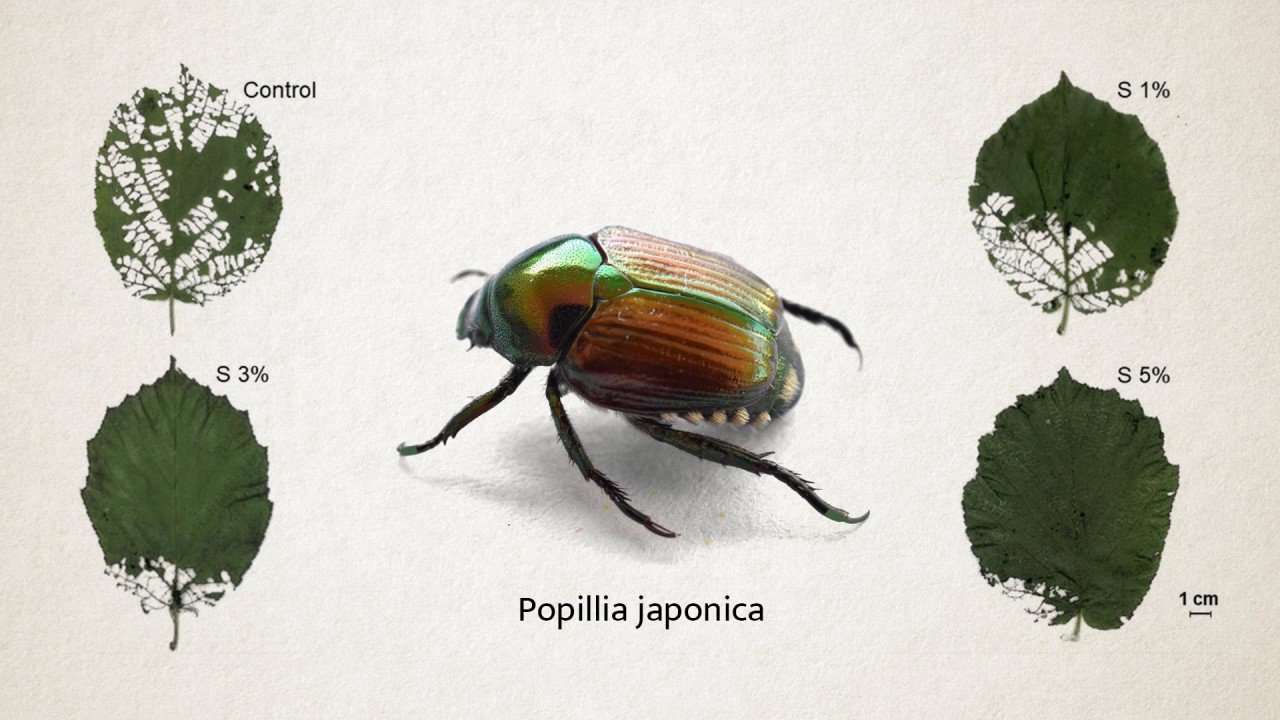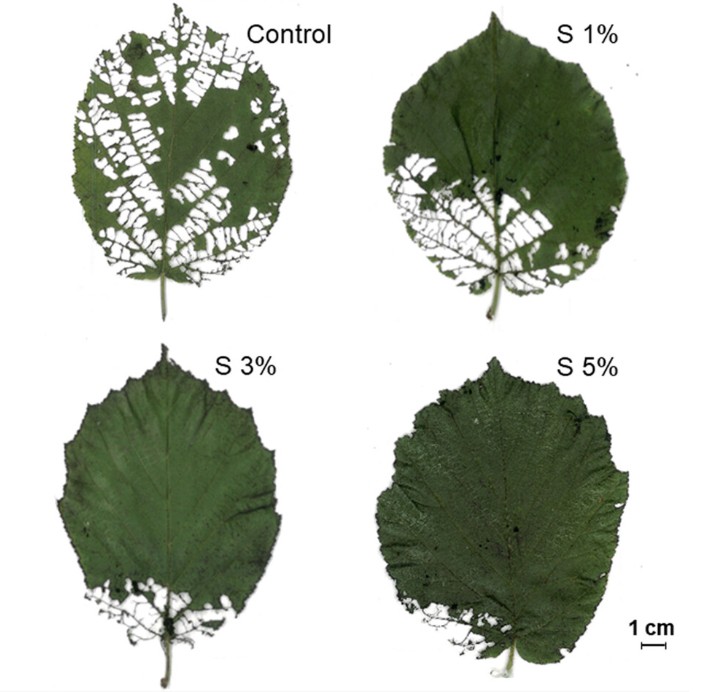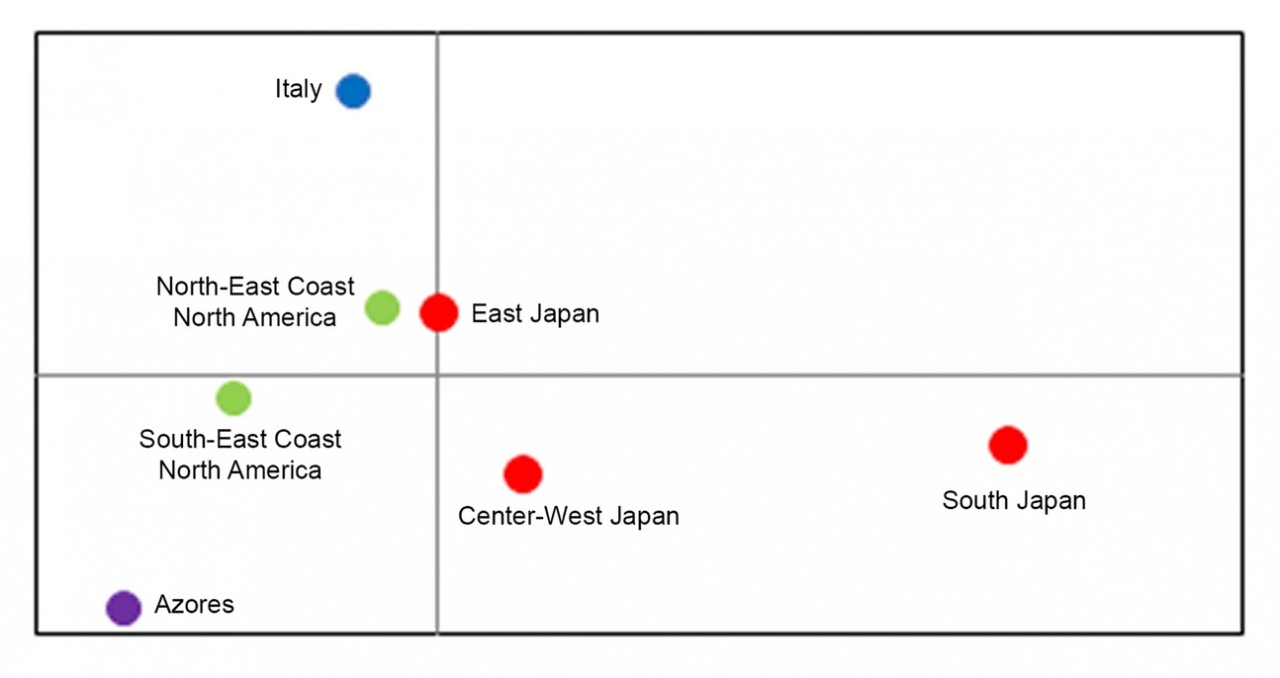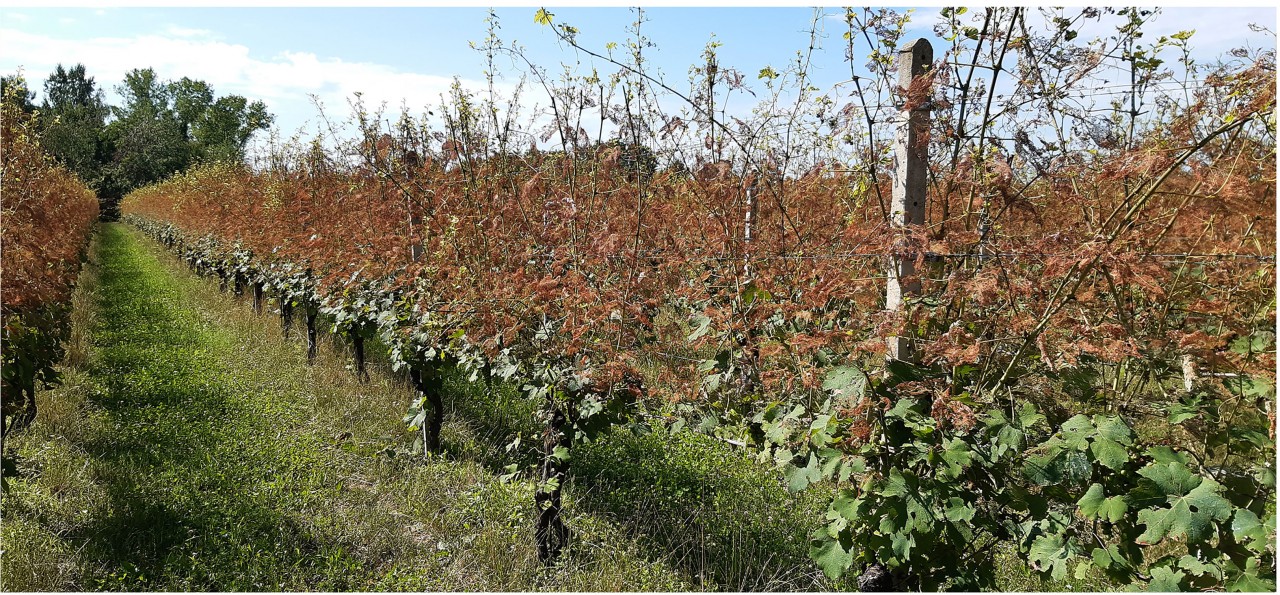In the past months many field trials and lab experiments gave their results, and they are good results!
In our lab, we found that a family of molecules called "saponins", that are naturally present in alfalfa plants, have a significant antifeedant and insecticidal effects on Popillia. Basing on this molecules, it will be possible to develop a new eco-friendly approach to protect the crops and manage the Popillia infestation
If you want more info: https://doi.org/10.1111/jen.13153
- In field, we tried a lot of different strategies to effectively reduce the numbers of Popillia adults to protect crops. Traps with different shapes and chemicals were tested searching for the best combination to use. We concluded that the long-lasting insecticide-treated net (LLINS) impregnated with alpha-cypermetrin was the most effective, regardless the shape of the attract-and-kill device used. Morever, we noted also that the Popillia flight habits greatly influence the effectiveness of this control method.
If you want more info: https://doi.org/10.1002/ps.7504
Other strategies using biological control agents were tested to control in field the Japanese beetle adults. An extensive survey was conducted searching for local microorganisms able to infect and kill Popillia adults . At the end of the survey, the most promising biological control agents result two particular strains of entomopathogenic fungi Metharizium brunneum and Metarhizium robertsii. Now, these fungal strains are going to be tested in a newly designed trap specifically created for flying habits of Popillia.
If you want more info: https://doi.org/10.1016/j.jip.2023.107891
A very important step to limit the spread of Popillia in Europe is block new introductions (or re-introductions) of this pest. So, the question "Where Japanese beetle comes from?" from an academic interest becomes an important information to better focus the inspecting activity and retaining the achievements laboriously made in the fight against Popillia. We found that both European Popillia outbreaks originate from North America and not from Japan as the species name can suggest. In particular, the Azorean infestation occurred more than 50 years ago originated from the southeastern coast of US, and the more recent Italian and Swiss outbreak cames from New Jersey.
- If you want more info: https://doi.org/10.1007/s10340-023-01653-1
Summary of results achieved in past years about monitoring activities and management strategies against Popillia japonica in Italy were published in a complete and publicly avaliable review.
If you want more info: https://doi.org/10.3389/finsc.2023.1175138
Stay tuned for further develops in the fight against Popillia japonica!





